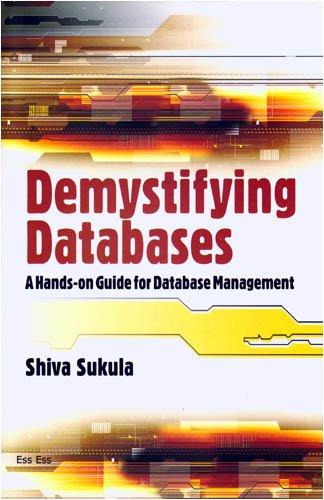Question
IN R PROGRAMMING Up to now we have seen some root finding algorithms: Bisection, False Position and Secant. Bisection was based on iteratively re-setting the
IN R PROGRAMMING
Up to now we have seen some root finding algorithms: Bisection, False Position and Secant. Bisection was based on iteratively re-setting the interval. This was done according to the sign of the function value at the midpoint. Regula Falsi, on the other hand, was derivative based and iteration was almost identical to Bisection. For the last one we have an immediate iteration rather than a sign check branching. So, we can say that Regula Falsi is guaranteed to converge but Secant may fail.
I. Questions
Write a function bisection(f, a, b, n, tol) . Arguments must be of the following form: f : focused function. a, b : left and right boundaries of the interval. n : number of iterations. tol : error tolerance. Write a function false_position(f, a, b, n, tol) . Arguments must be the same with bisection .
Write a function secant(f, x1, x2 , n, tol) . Arguments must be of the following form: f : focused function. x1, x2 : initial guesses. n : number of iterations. tol : tolerance.
Use these methods to find solutions accurate to within 10-2 for x3 - x + 1 = 0 on each of the following intervals: [-2, 0] [-3, -1] [-5, 1] For each method and interval combination write the iteration count and the root.
II. Remarks You should have a result table with size 3x6
Step by Step Solution
There are 3 Steps involved in it
Step: 1

Get Instant Access to Expert-Tailored Solutions
See step-by-step solutions with expert insights and AI powered tools for academic success
Step: 2

Step: 3

Ace Your Homework with AI
Get the answers you need in no time with our AI-driven, step-by-step assistance
Get Started


